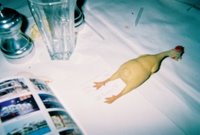 Euchre QOD: “Please provide the playing protocol"
Euchre QOD: “Please provide the playing protocol"Euchre Haiku:
You receive your cards
You think about how to play
Don't justify it
Savvy Strategies
In my circle of euchre playing friends there is a guy who is famous for the following play. He wins a trick in a non-trump suit and then he leads back another card in that same suit. He does it so often that we call it the Kevin Maneuver. It’s really quite a good move when the situation warrants it. For example…
If you are sitting in seat 1 and you have a doubleton green suit headed by an Ace, you lead the Ace. If this card wins, your next play should be the other card in that same suit.
Why? Well, for a few reasons.
1. It’s nearly the same as leading trump. After you lead a suit once, it’s likely that at least 2 people will be short in that suit. If it happens to be your partner and the player to your left, then your partner has a chance to over-trump a low trump played by your opponent. The nice thing is that if your partner doesn’t have a higher trump, she doesn’t have to waste it. If you led trump, that wouldn’t be the case.
2. The dealer will often be two suited. One of the discarding strategies is to get short-suited. This often means that a dealer will have a hand that has a doubleton in one suit and is short suited in two others. Using the Kevin Maneuver takes advantage of this discarding tendency.
3. Sometimes it’s the high card. If no one trumps the card from a suit led twice, it’s often the highest one left in that suit. For example, if you play a green Jack the second time a suit is led, it is often high enough to win. This usually only happens late in the game near trick 4 or 5 but it does happen.
Winning a trick and leading back that same suit is an excellent play that you should consider making whenever the situation warrants it. Kevin does it, and so should you.
Euchre on the Web
Want to play euchre but you don't have enough people to play? Consider the following options...
Euchre for one
Euchre for two
Euchre for three (I couldn't find a reference for three but in this article it tells you how they do it.)

No comments:
Post a Comment